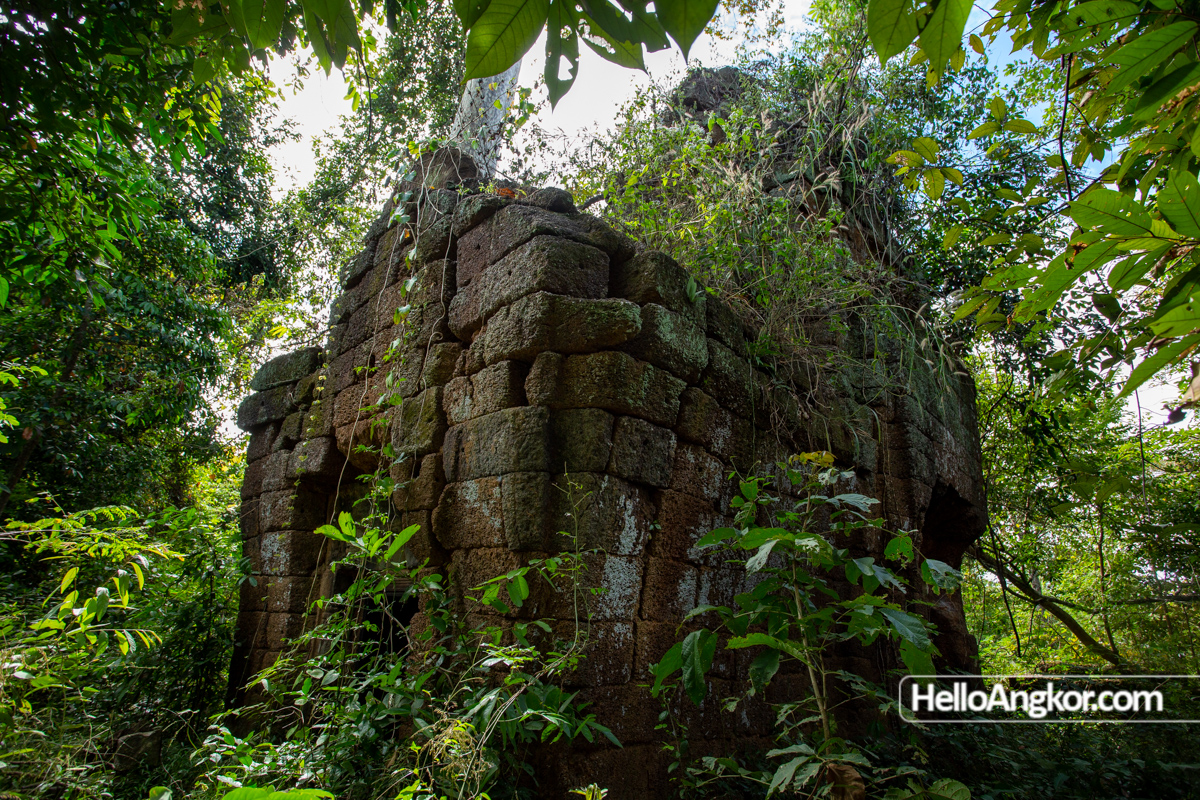- Area: Siem Reap Province > Svay Leu District > Kantuot Commune > Kantuot Village
- | Type: Ancient Remains & Temples
Also known as Prasat Samrong, it is recognised as being one of the many “Hospital Chapels” built during the era of King Jayavarman VII (reign 1181–1218). It’s a remote site, located on the north side of Kulen Mountain south of the village of Khna. The site features a central shrine, constructed of laterite and remarkably still standing, a “library” building, an outer wall with gopura on the east, a small laterite-lined basin, and a larger basin in the east (Trapeang Prey).

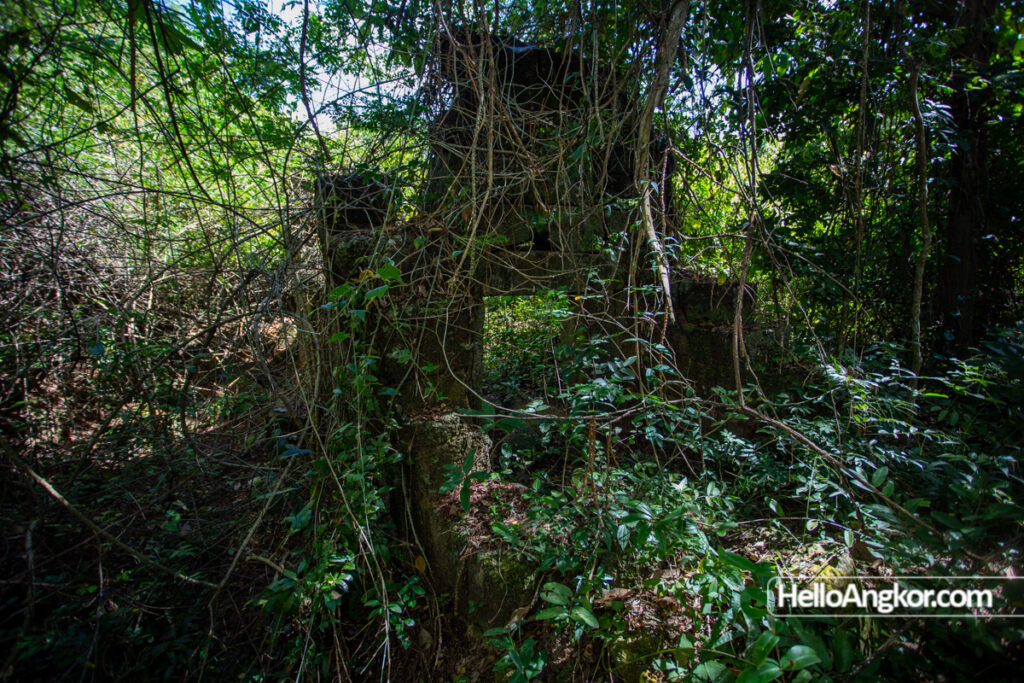
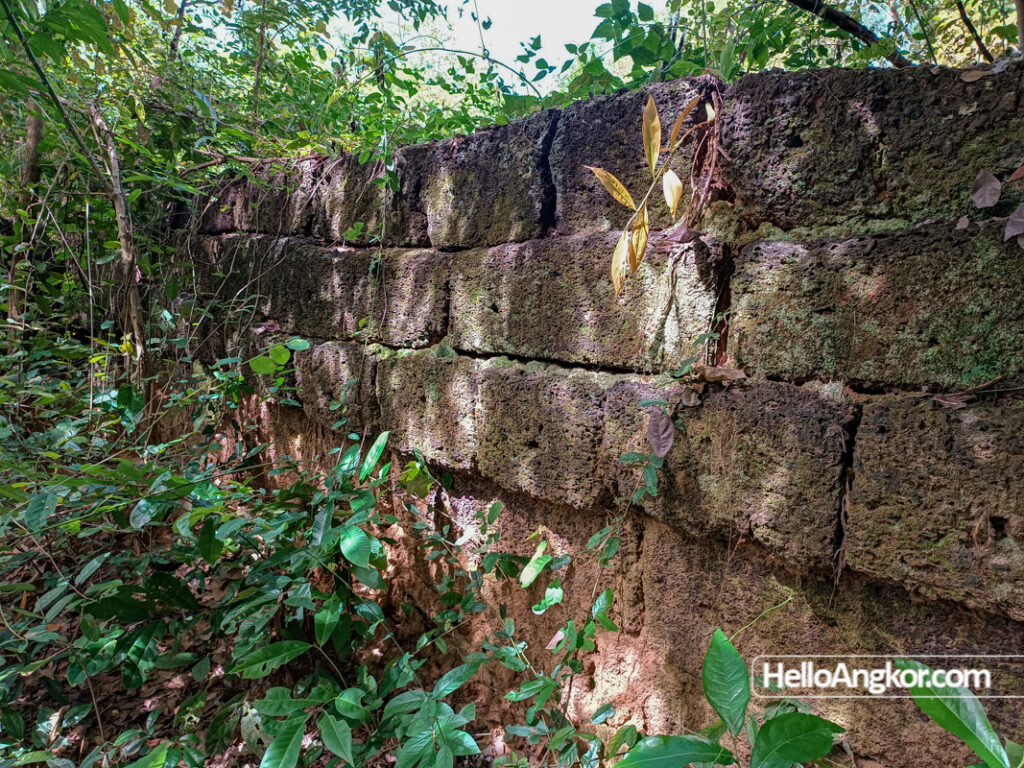
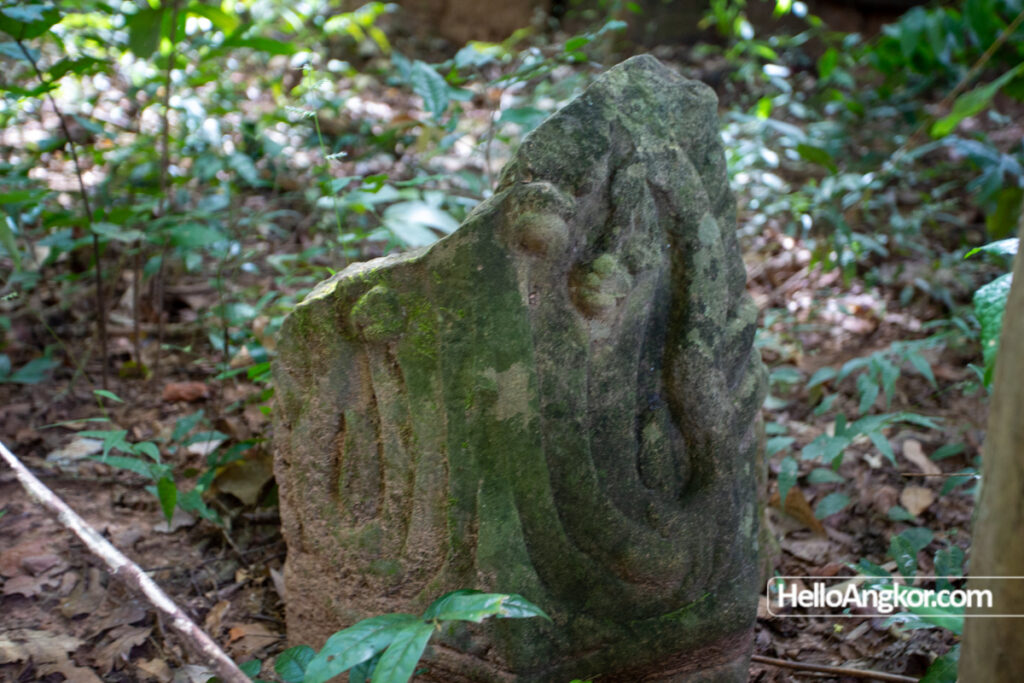
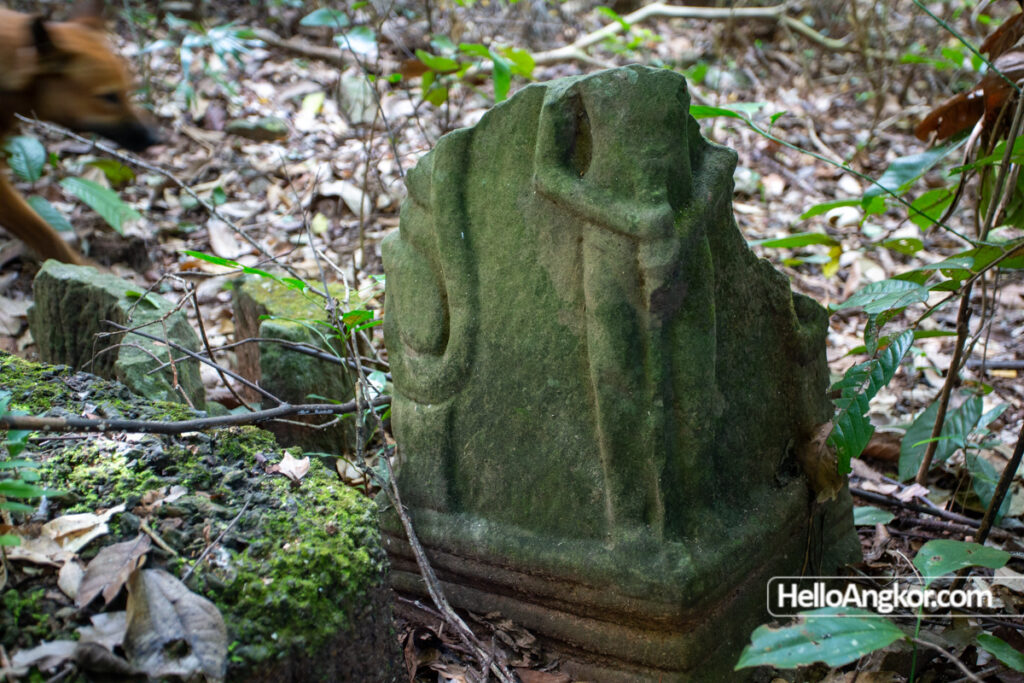
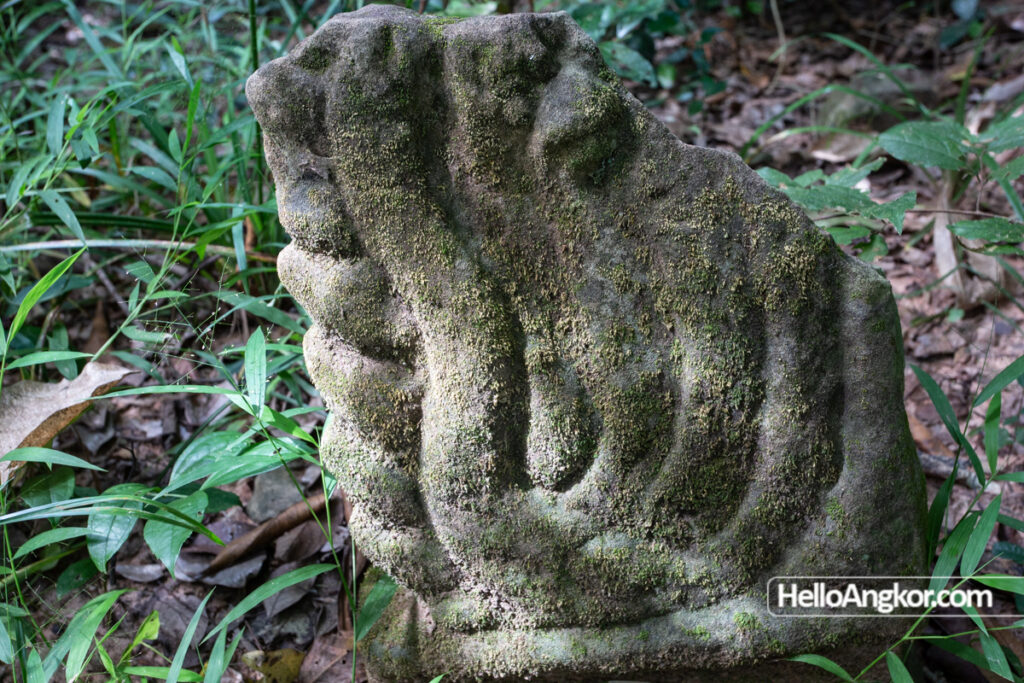
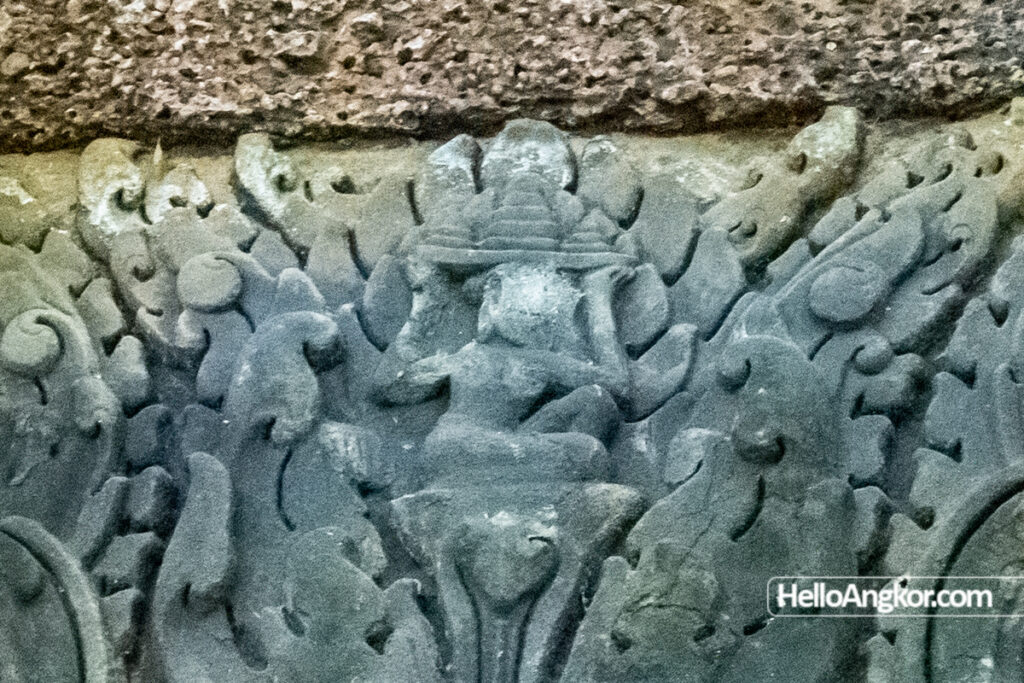
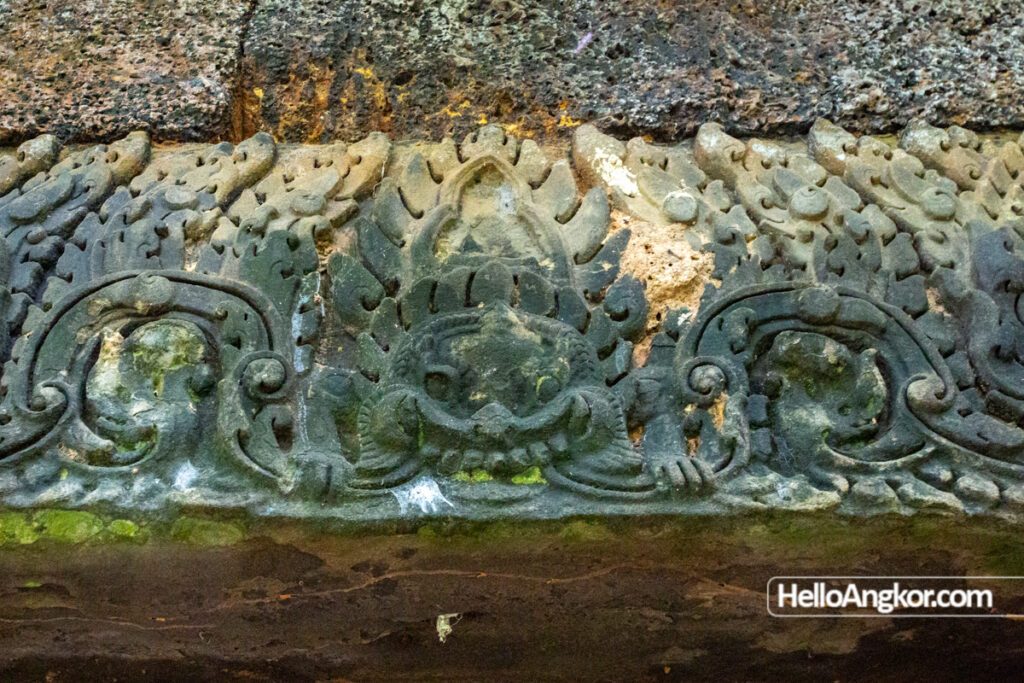
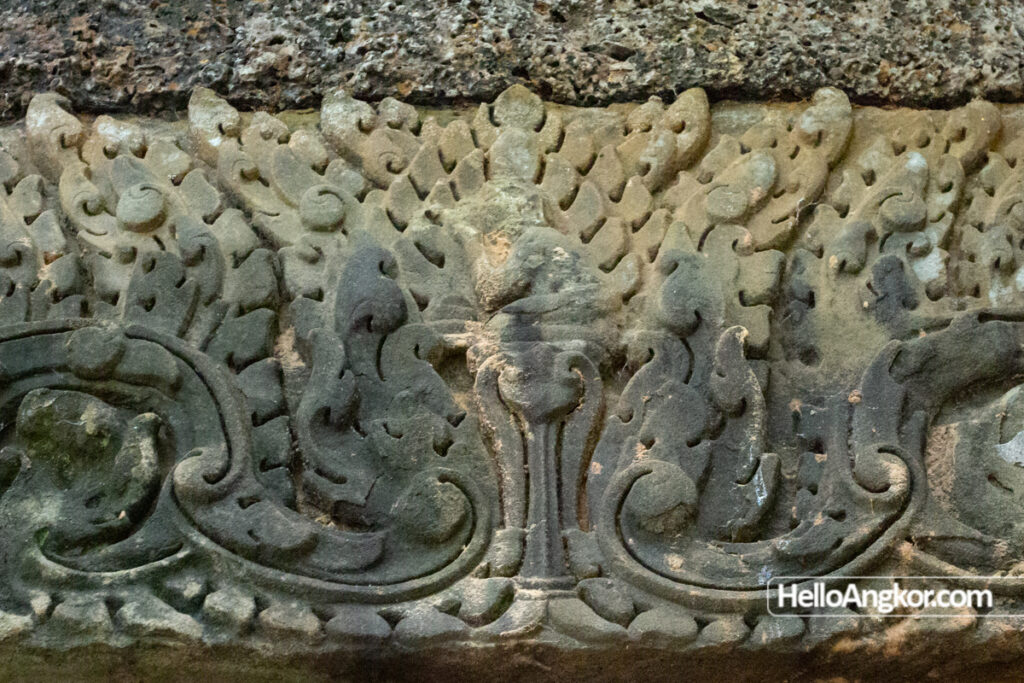
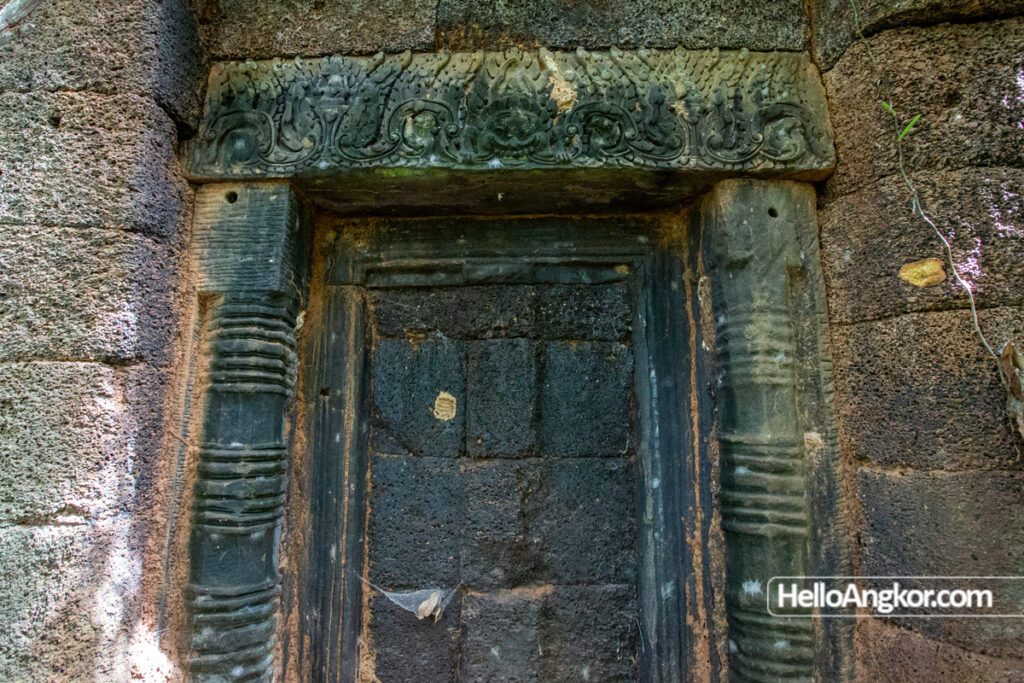
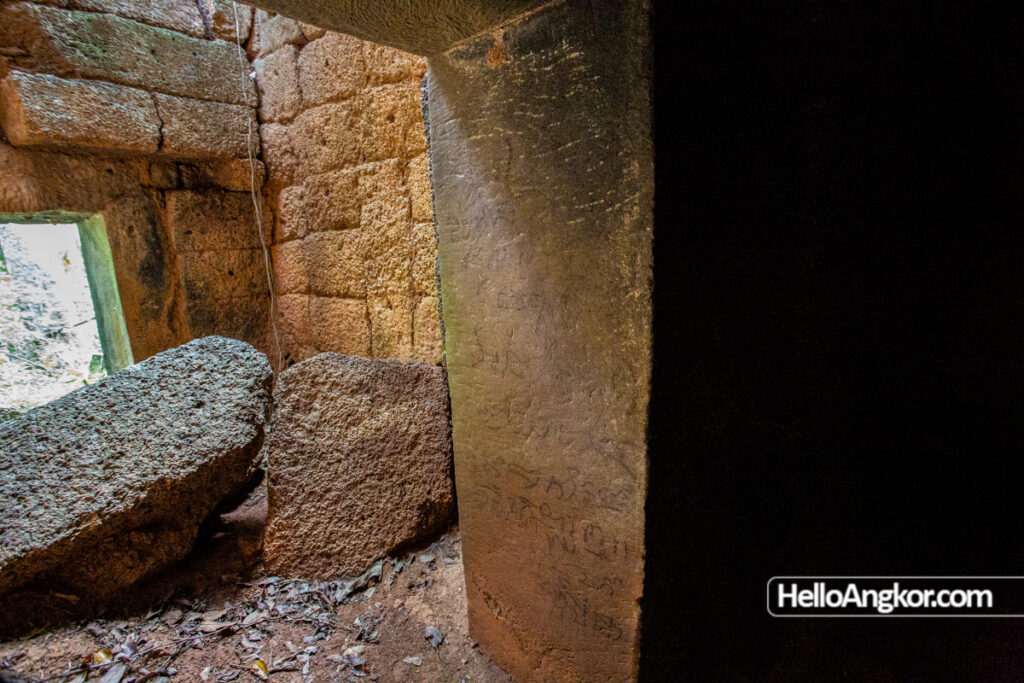
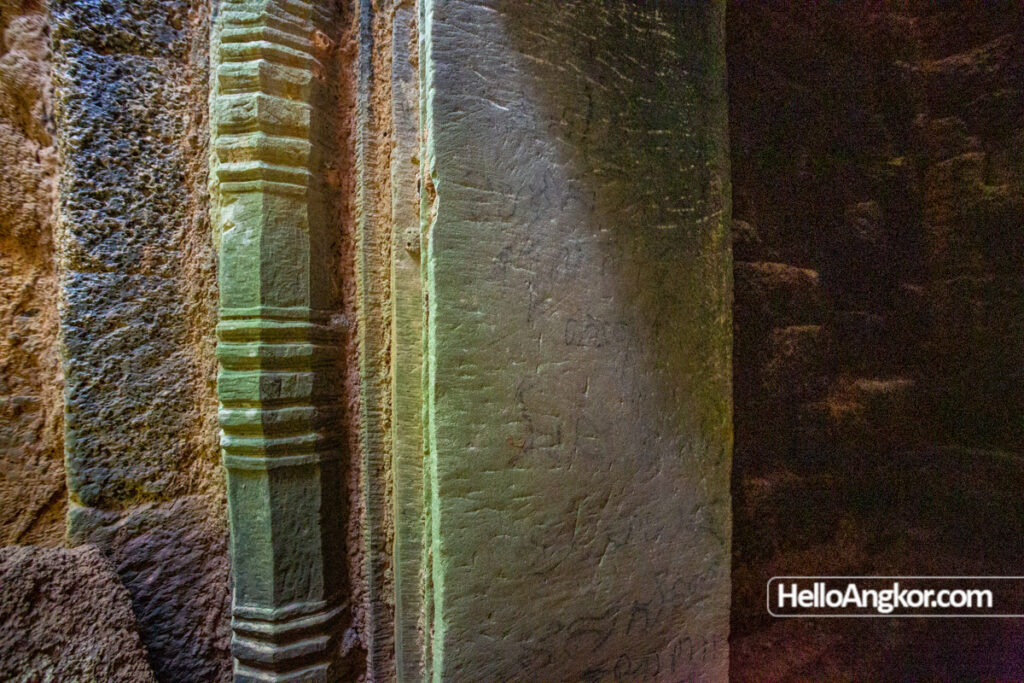
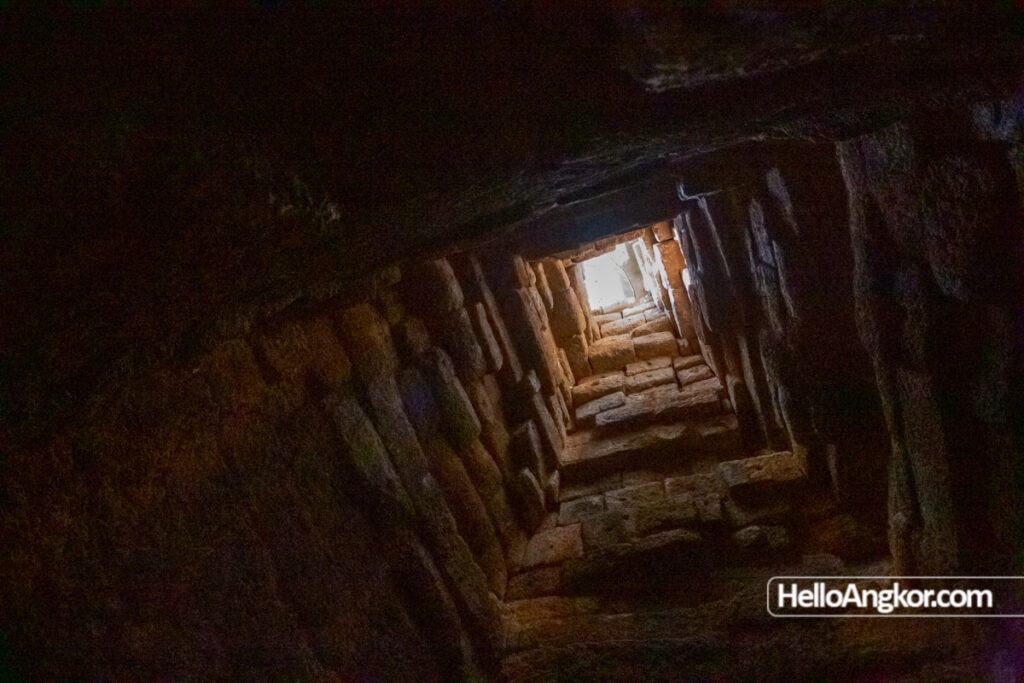
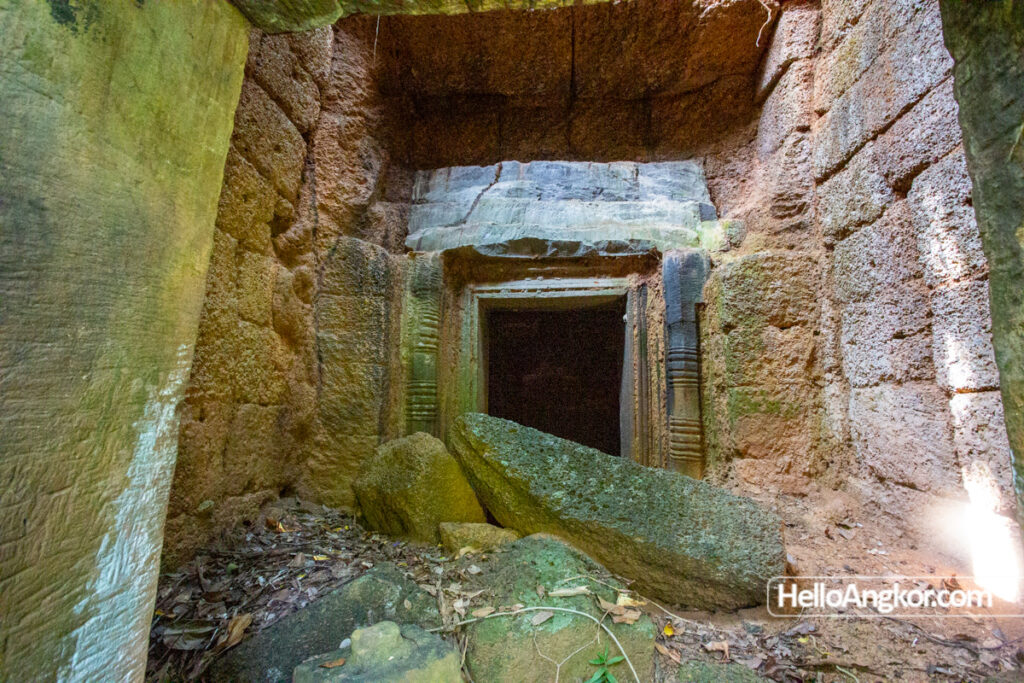
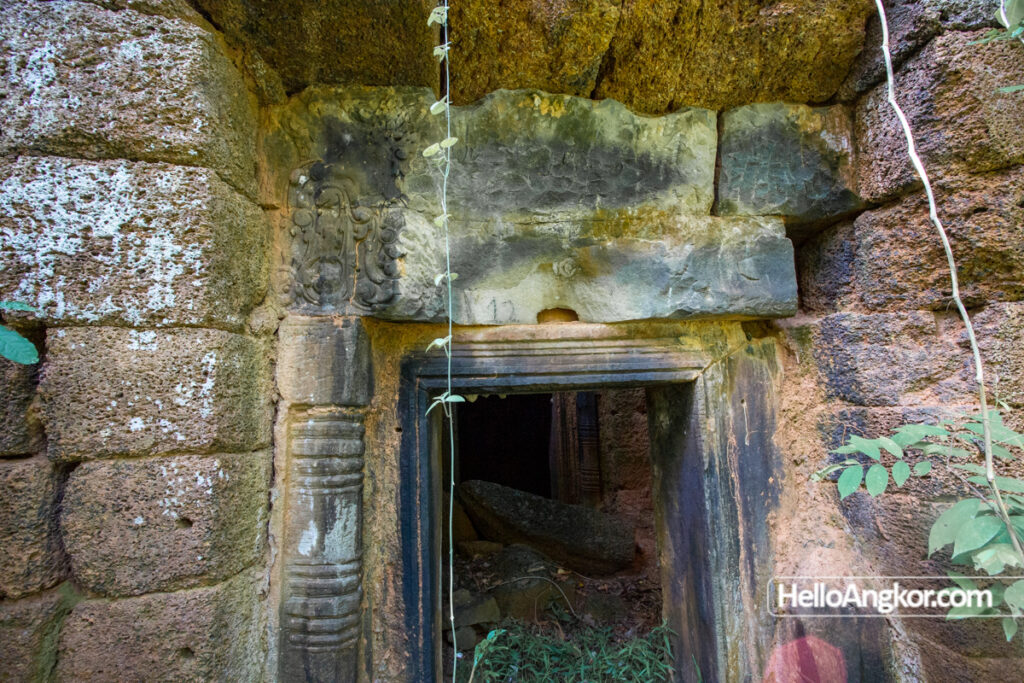
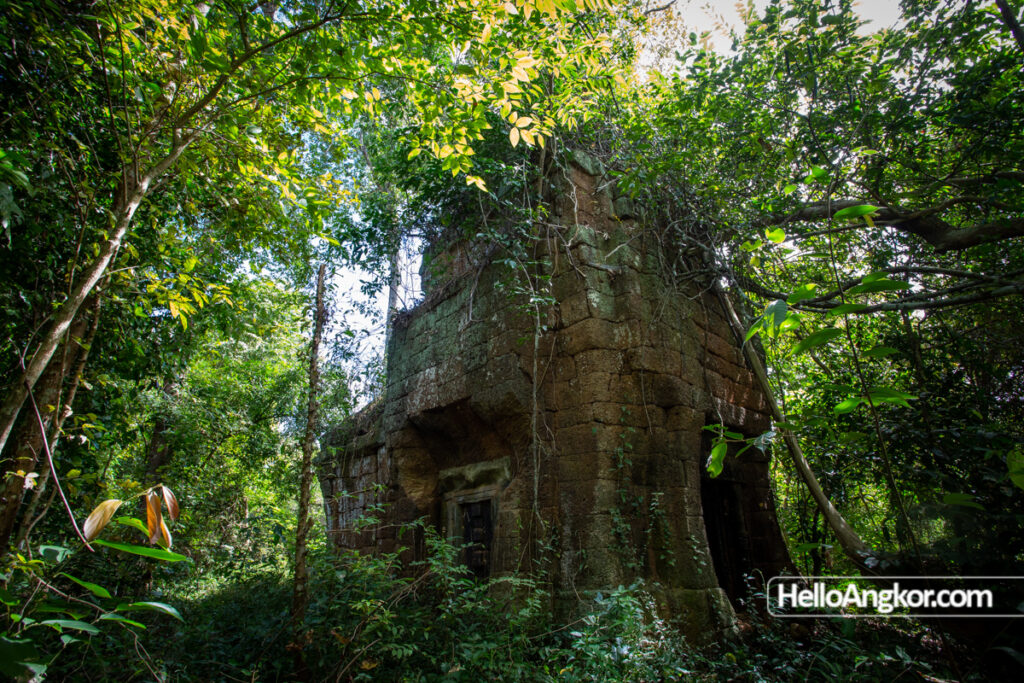
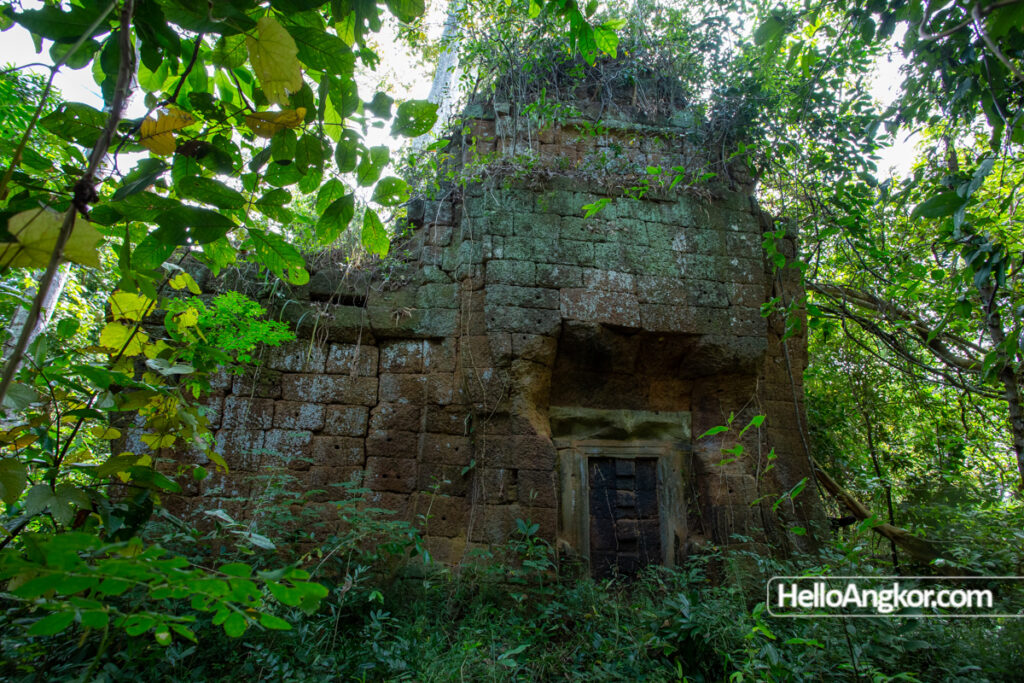

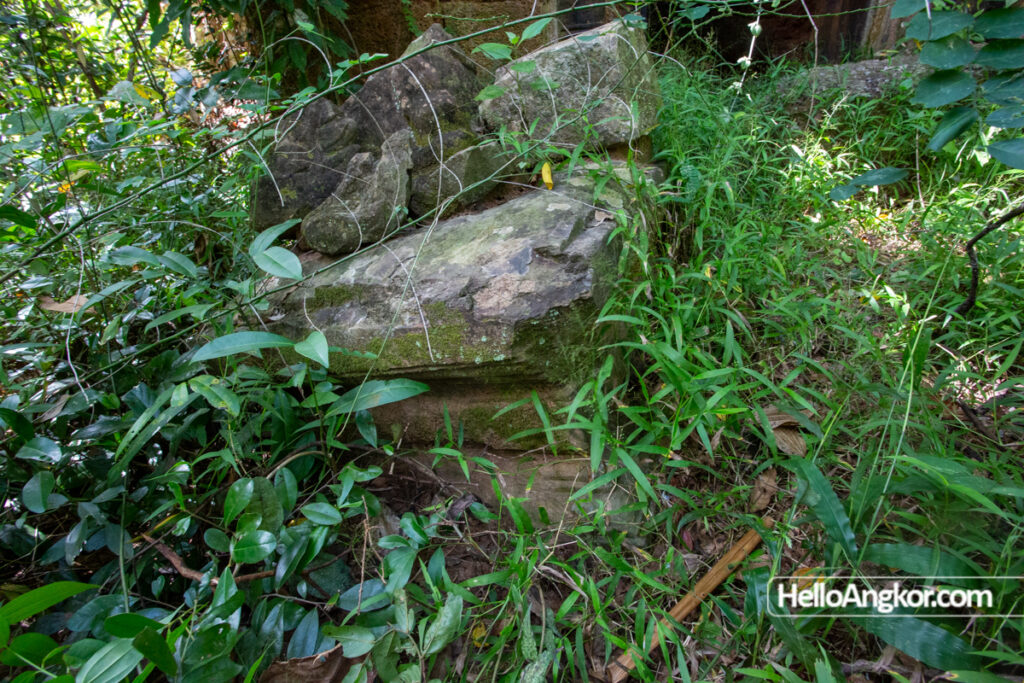
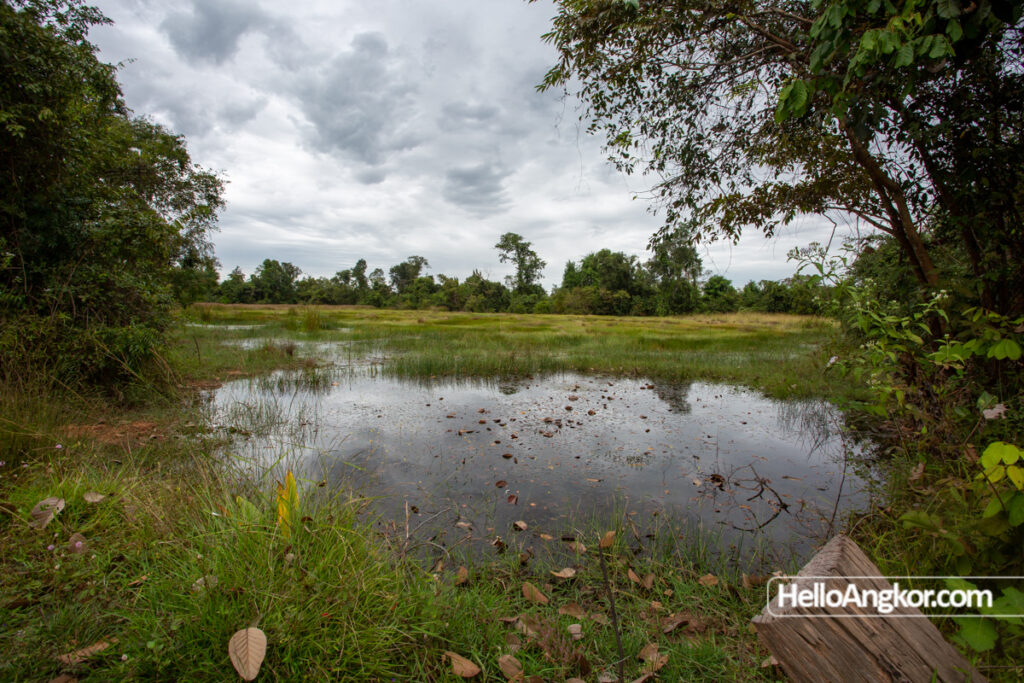
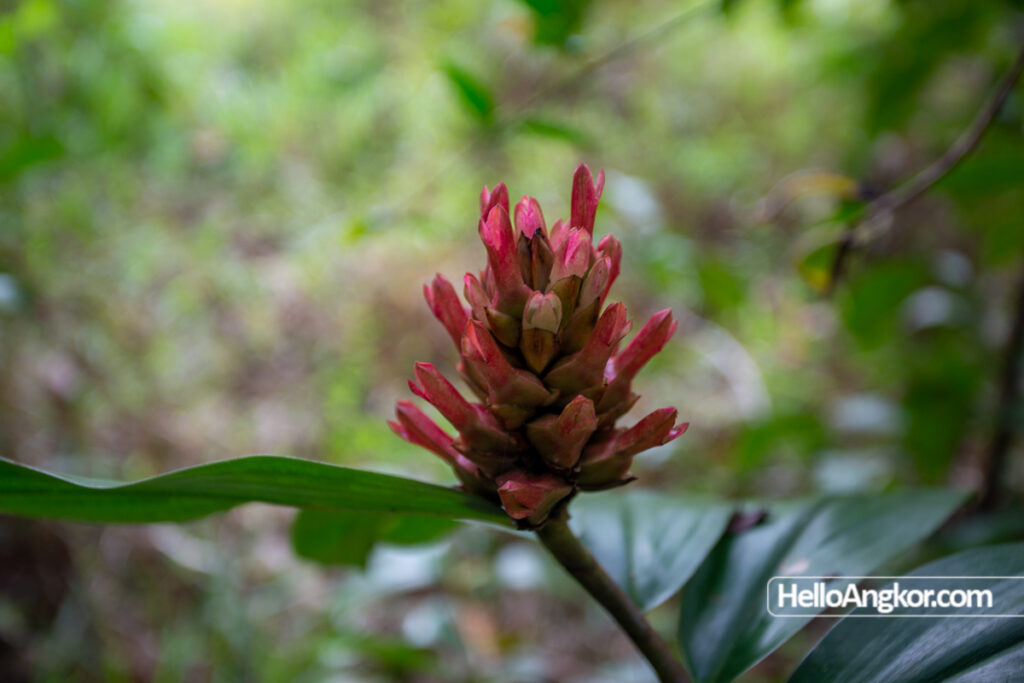
Site Layout

The earliest, and only (published), report on the site comes from Boulbert and Dagens in the late 60s/early 70s. Fortunately, it provides a description and photographs of many details which have been lost to time. A translation from French is provided below and see the references to read the original
Located about 2 kilometers northwest of the village of Kantuot, this monument includes a tower-sanctuary and a library enclosed in an enclosure open to the east but whose entrance pavilion has disappeared. A causeway starting from the eastern entrance passes between two lions and ends in a large rectangular pool,
The tower-sanctuary in laterite like the library and the enclosure is preserved practically on all its height; its base is buried. Its entrance located to the east is preceded by a forepart, while on the other three fares we see the false doors in laterite but whose frames are in sandstone.
The lintels of the east forebody and the west false door are of the classic type with monster’s head and foliage; the other three (North, South and interior East) are lintels with scenes. The central figure is recut everywhere except at the eastern interior lintel, however it is difficult to see linga in the result of this recut, it would rather be a kind of stupa; it is perhaps necessary to suppose that these lintels which date from the end of the time of Jayavarman VII were recut once by the Sivaite iconoclasts of the end of the 11th century and a second time by Buddhists who would have transformed the linga into stupas.
Lintel of the eastern forebody, above the monster’s head, a figure seated on a molded throne has been transformed into a linga-stupa another figure seated on a lotus above has been outright deleted; on the left of the composition an elephant, harnessed and mounted, is shown passing to the right fight of Rama or Laksmana against the monster Kabandha.
East interior lintel: a procession passing to the right occupies the entire surface. A character with indistinct features sits in a palanquin whose stretchers have naga-shaped end pieces: six men carry this palanquin surrounded by umbrella bearers and soldiers.
Lintel South: In the center under an areature a seated figure has been transformed into a linga-stupa: three Deva on the right and three Asurfa frame it, they are separated by stylized trees forming arcades of foliage.
West Lintel: the central figure seated under an arcade above the monster’s head has been recut, on the right, a figure, one knee on the ground and a tray of offerings on his head, a figure in prayer on the left.
North lintel: the recut central figure was seated on a lotus throne and under a tree; it is framed by worshippors, a Deva on the right and an Asura on the left on either side, eight Asura advance brandishing weapons. The scene which takes place in a forest is perhaps the Assualt of Mara.
The decoration of this tower-sanctuary was quite complete in view of its sloppy construction, the very numerous accent pieces which are on the ground are divided into three categories: small corner pieces with vegetal decoration, corner pieces more important stones decorated with images of dvarapala and finally large slabs representing the dikpala: of these last two are still visible that of the South with Yama on a three-headed buffalo and that of the west with Varuna on a three-headed hamsa.
The library, visible to the right of the tower, has a traditional plan with opening to the West; it is well preserved, but its lintels have disappeared.
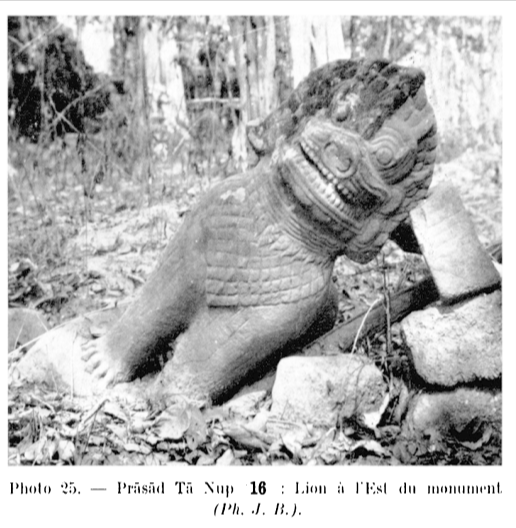
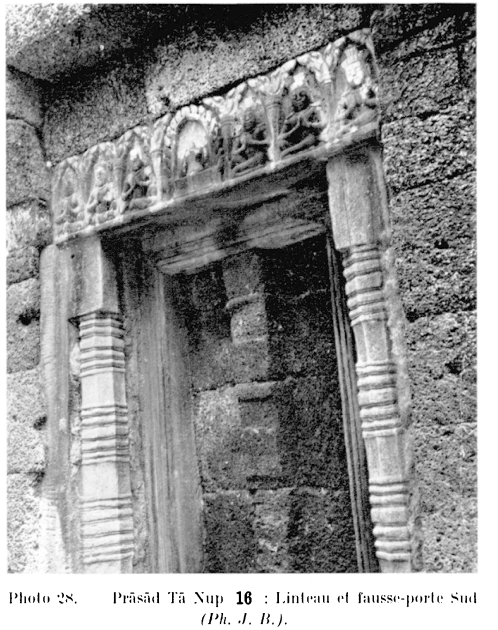
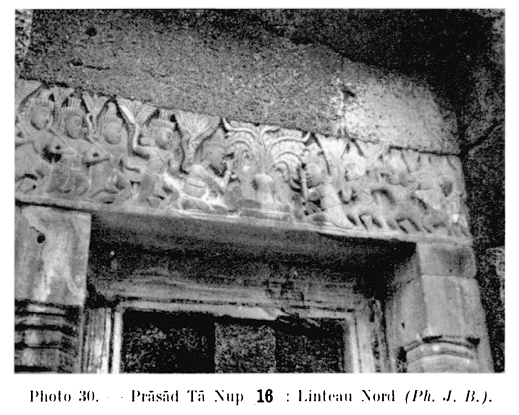
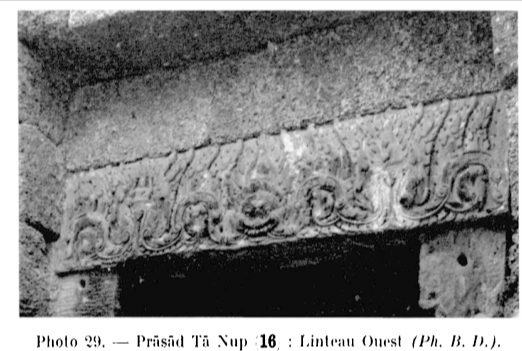
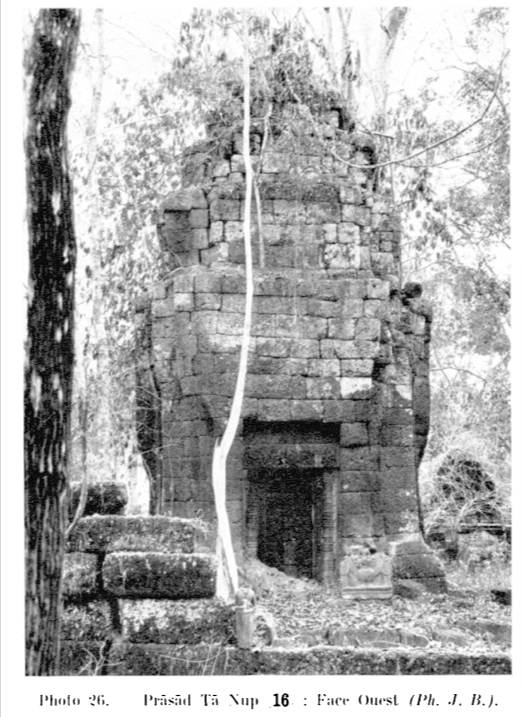
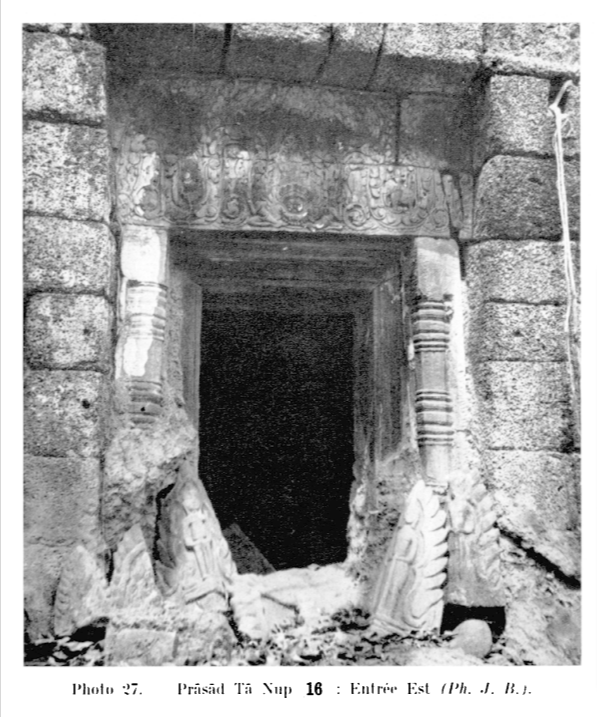
Note: the site is difficult to reach, with only farm trails providing access, the site’s surroundings are also heavily overgrown making access to the eastern entrance a small challenge.
References
- The site layout comes from a research paper by Dr Latinis et al, originally published by Im, S (2014).
- Les Sites Archeologiques de la region Bhnam Gulen, Boulbert and Dagens 1973
Map
Site Info
- Site Name: Ta Nup Khmer Name: តានុប
- Reference ID: HA12941 | Last Update: December 23rd, 2022
- Other Names: Samrong
- Tags/Group: b, Hospital Chapel, Kulen, Temples
- Location: Siem Reap Province > Svay Leu District > Kantuot Commune > Kantuot Village
- MoCFA ID: 1916
- IK Number: 226.16

